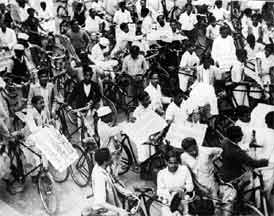1935 Government of India Act
The British parliament passed the Government of India Act. Under the terms of the Act, Burma and Aden were separated from India. India was divided into 11 provinces, each under an appointed governor and with an elected legislature. The provincial governments were to have broad powers to operate independently.
The Government of India Act was passed by the British Parliament on August 2, 1935. The India Act was a significant piece of legislation passed by the British Parliament in 1935. Its primary purpose was to grant some degree of autonomy to India while still maintaining British control over the country. The Act was introduced by the Secretary of State for India, Samuel Hoare, and was passed after several years of debate and negotiation.
One of the key provisions of the Act was the separation of Burma and Aden from India. Burma was made into a separate colony, while Aden was made into a separate British protectorate. India itself was divided into 11 provinces, each of which was to be headed by an appointed governor and a legislature elected by local people. The provinces were given considerable autonomy in managing their own affairs, including the power to raise and spend revenues.
The Government of India Act also introduced several other important reforms. It established a federal system of government for India, with a central government in Delhi and separate provincial governments in each of the 11 provinces. It also introduced a system of communal representation, which reserved seats in the legislature for members of different religious communities. The Act provided a framework for further reforms in the years to come, and it paved the way for India's eventual independence in 1947.
 >
>